Apart from the more common woodworking arsenal of tools such as bench planes, scrapers, chisels and gouges, there are the specialist luthiers tools which have been the staple of the violin makers bench, most likely since the middle ages. These include thumb planes, thickness callipers, peg reamers and shavers, as well as the various pots, mortars and pestles, alembics of all kinds for the preparation and cooking of the varnish.
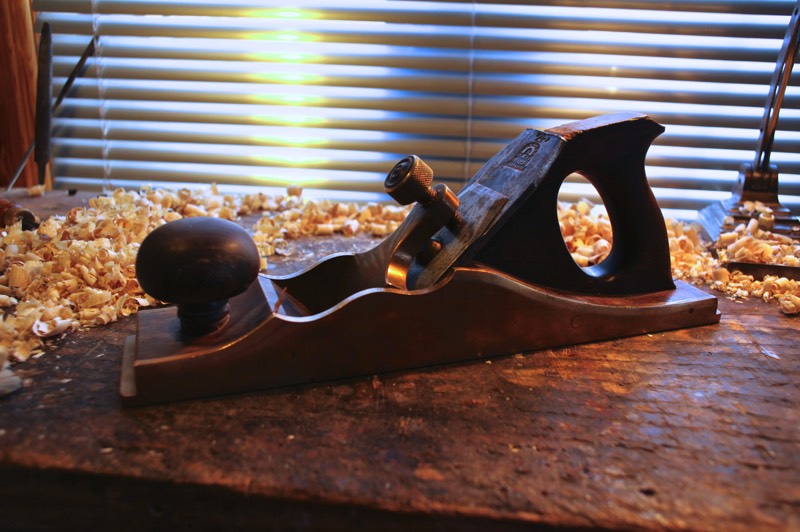
This old Norris copy, I made during my studies at the Newark school back in the seventies. My father had given me some plates of admiralty brass and They were the perfect thickness for this plane. It is dovetailed on the sides like the Norris planes, but it doesn't have the Norris adjusting mechanism. My grandfather had taught me to adjust this kind of bench plane with a small hammer. I have several old plane blades with cap irons that I scavenged at tool shops in London. This plane has a phenomenal "Ward" blade that is thick enough not to chatter and is forged from mild steel and hard edge steel. To me there is no better plane for making absolutely perfect centre joints.
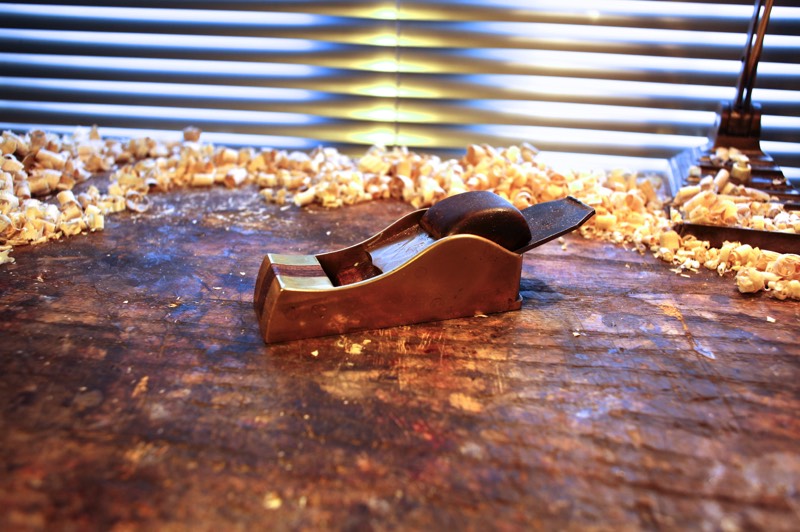
When I was a student at Newark, there was an ex Rolls engineer who taught us metalwork with a saw, file and scraper. His favourite phrase was " I'm not saying it's impossible-but it's very very difficult" The brass block plane above was made under his supervision and is dovetailed with indian rosewood infills. He also taught us to harden and temper tool steel.
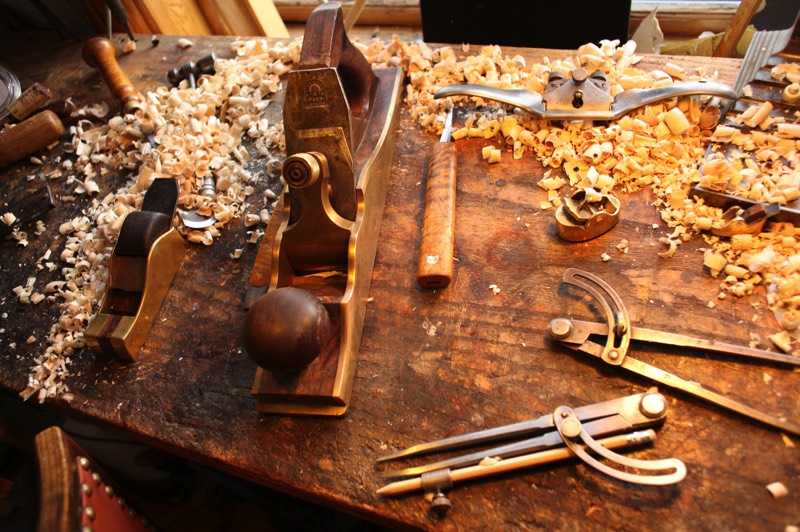
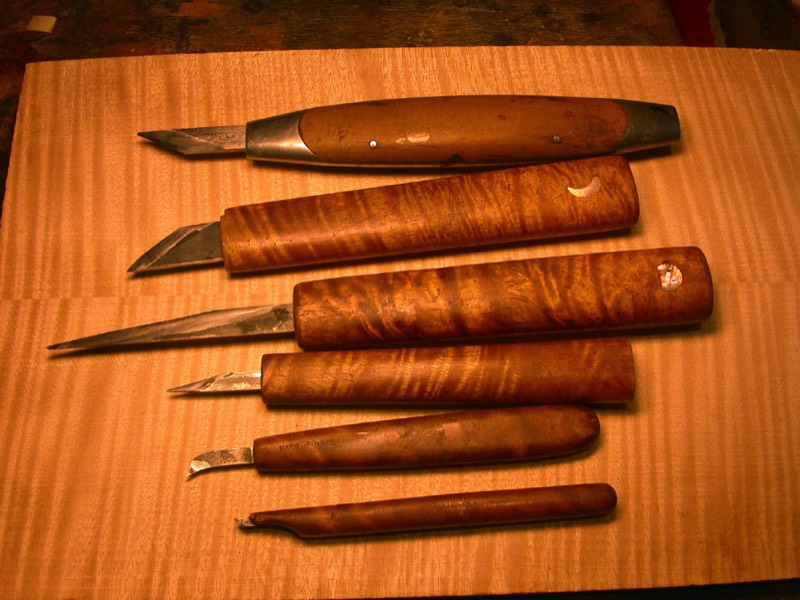

This thumb plane is my favourite. I made it of wood and had someone cast it in brass. It is rather big approx. 30mm. long and eats away at the densest maples.
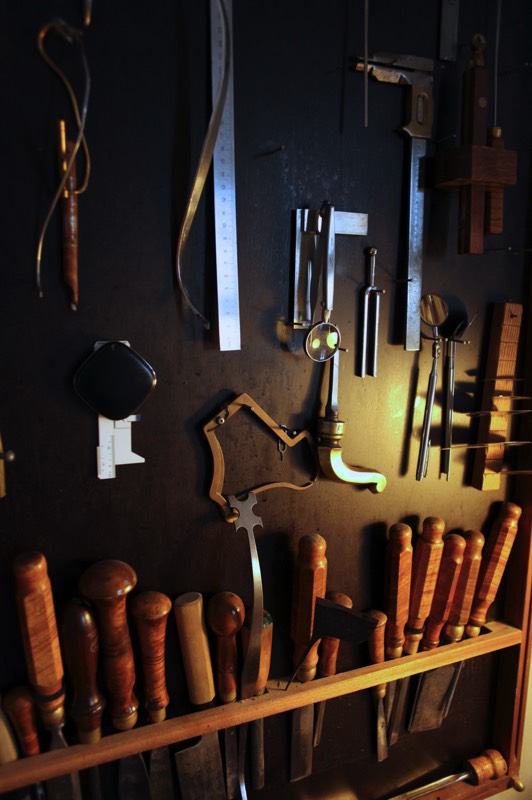
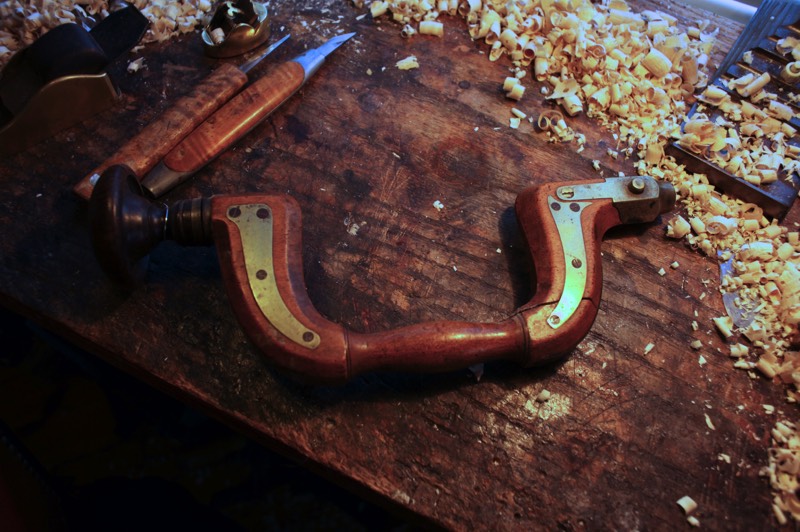
A good old beech brace that still works despite the nasty crack.

